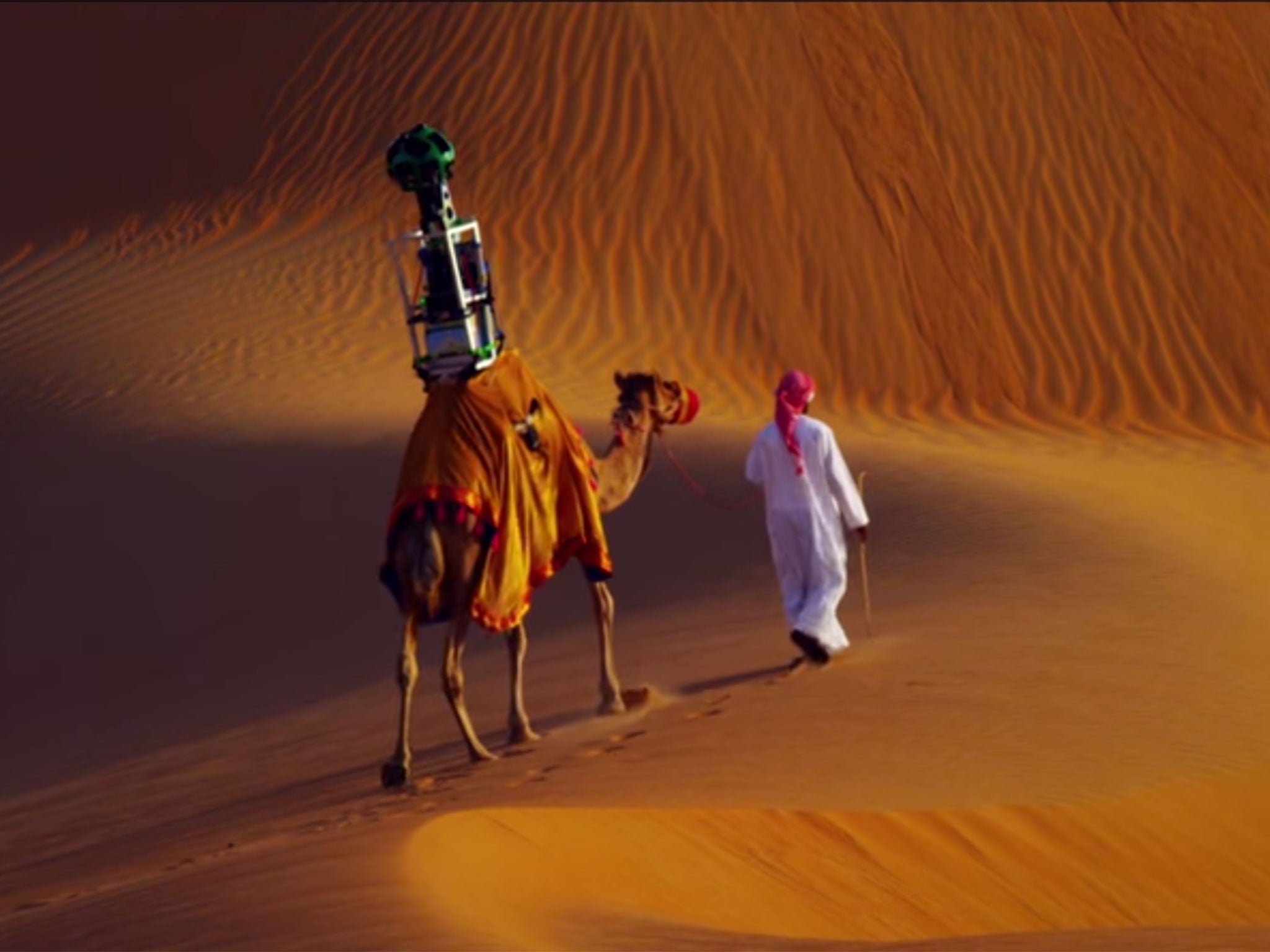The Independent's journalism is supported by our readers. When you purchase through links on our site, we may earn commission.
Google Street View camel: Search giant now employs animals to carry cameras after repeatedly being accused of running them over
Company claims to have found 'the best, most authentic and least damaging way' to picture this stunning landscape

Your support helps us to tell the story
From reproductive rights to climate change to Big Tech, The Independent is on the ground when the story is developing. Whether it's investigating the financials of Elon Musk's pro-Trump PAC or producing our latest documentary, 'The A Word', which shines a light on the American women fighting for reproductive rights, we know how important it is to parse out the facts from the messaging.
At such a critical moment in US history, we need reporters on the ground. Your donation allows us to keep sending journalists to speak to both sides of the story.
The Independent is trusted by Americans across the entire political spectrum. And unlike many other quality news outlets, we choose not to lock Americans out of our reporting and analysis with paywalls. We believe quality journalism should be available to everyone, paid for by those who can afford it.
Your support makes all the difference.Google has been through a number of controversies with its Street View cameras, from a donkey that it didn’t hit, to a dog that probably wasn’t run over, to witnessing a murder that didn’t happen.
It’s perhaps understandable then that the search giant has decided to err on the side of caution with its latest project – mapping the Liwa desert from the back of a camel.
Users are promised the virtual trip of a lifetime through “a vast expanse of desert dunes”, where sights along the way include the largest oasis in the Arabian peninsula, dunes that reach a height of up to 130 feet (40 metres), and herds of other camels clearly bemused by what is being done to their animal.
It has all been captured by a Google “Trekker” camera seated atop Raffia, a 10-year-old bull, who seems to take the role in his stride.
According to the company’s Middle East spokesman Joyce Baz, for each location it shoots Google considers how “to customise the capture and how we do it for that part of the environment”.
He told Sky: “In the case of Liwa we fashioned it in a way so that it goes on a camel so that it can capture imagery in the best, most authentic and least damaging way.”
A blog post on Google’s website talks users through what they can see in Liwa from Raffia’s back’s-eye-view.
“These rolling sandy hills were home to early settlers back in the Late Stone Age, making Liwa one of the oldest sites in the United Arab Emirates,” it reads.
“Some of the richest history in this desert lies in the Liwa Oasis - the largest oasis in the Arabian peninsula.
“The oasis is also home to date farms, whose trees and fruit are important cultural symbols - the trunks of the palms were used to weave the walls of Bedouin tents, baskets and more, while the fruit was a treasured treat for the locals.
“Now, the oasis is a sought out location for tourists around the world and those who live in the area.”
To see more of what Raffia captured, visit Google’s Street View gallery here.
Join our commenting forum
Join thought-provoking conversations, follow other Independent readers and see their replies
Comments